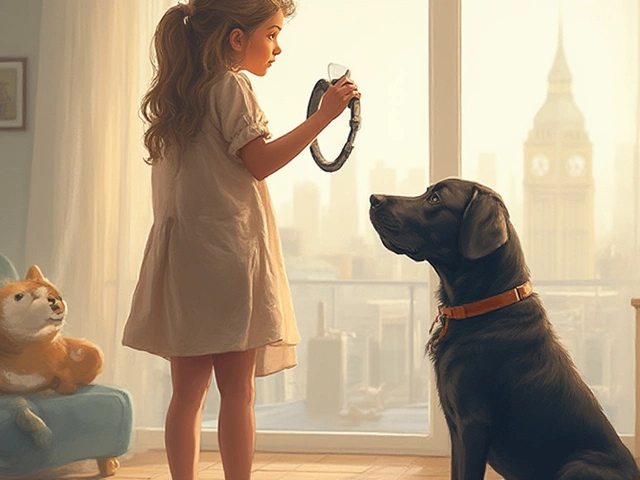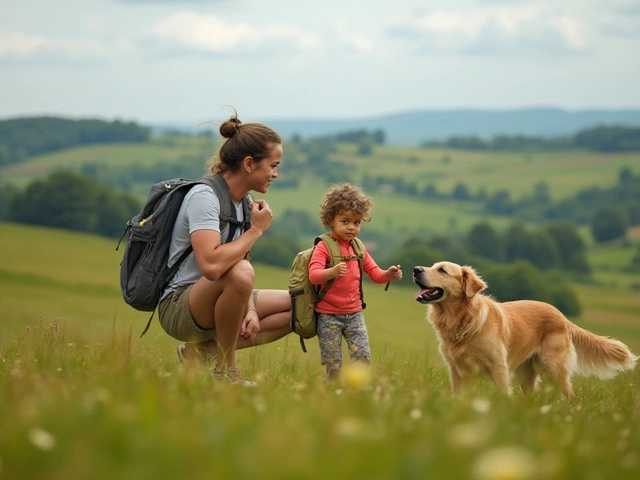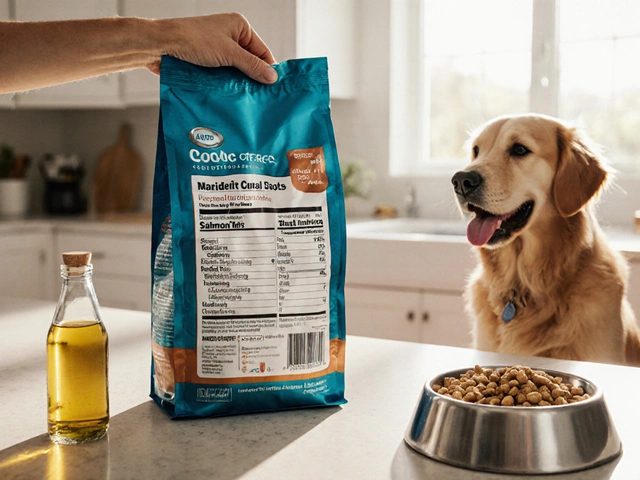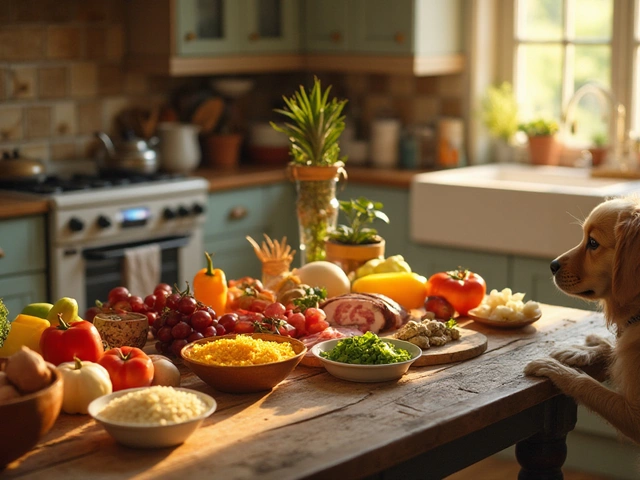Having a puppy can feel a bit like having a small whirlwind tearing through your home. While they bring endless joy, they also come with their own unique set of challenges, like peeing in the crate at night. It's a common predicament for new pet parents who are in the midst of housebreaking their furry friends. But don't despair—it's a solvable issue.
By understanding why puppies might have accidents in their crates, you can tailor your approach to training and ensure your little one is comfortable and happy. It's all about combining knowledge with practical solutions. So, let's explore what leads puppies to pee at night and unravel the secrets to crate training success.
- Understanding Puppy Behavior
- The Importance of Crate Training
- Establishing a Potty Schedule
- Recognizing Your Puppy's Signals
- Creating a Comfortable Crate Environment
- Setting a Consistent Bedtime Routine
Understanding Puppy Behavior
Getting into the mind of a puppy can feel like diving into a whimsical fairy tale. Puppies, often exuberant and quirky, are little beings trying to navigate an unfamiliar world. Their behavior, while sometimes puzzling, is driven largely by instincts and the need for comfort. At the core of their behavior is the simple but profound reliance on routine and structure. Much like toddlers, puppies see the world as a vast playbook, each corner of which might hold a new adventure or a dreaded threat.
One of the reasons a puppy might pee in their crate at night is due to their still-developing control over their bladder. Puppies under four months old typically can’t hold it in as long as adult dogs. The timeline of bladder control doesn't follow a strict schedule, though it's often said that a puppy can only hold their bladder for as many hours as they are months old, plus one. It’s not just physiological growth at play. There are emotional elements too. Puppies, when suddenly separated from their littermates and thrust into a new home, might feel anxious or lonely, triggering nighttime accidents.
Beyond just physical considerations, behavioral tendencies and natural impulses contribute significantly to why puppies act the way they do. For instance, some breeds are naturally more anxious or energetic, which can also influence their need to eliminate during the night. As pet parents, we must remember, "Puppies are not born with an owner's manual." This quote from renowned animal behaviorist Dr. Sophia Yin highlights the importance of our role in understanding and guiding these little canines through their formative months. Accommodating their high energy levels with adequate exercise and engaging activities can sometimes help in reducing nighttime peeing incidents. Exercising them well during the day can encourage sound sleep at night, minimizing restless behavior and the chance of unscheduled bathroom breaks.
Understanding these patterns is crucial when you embark on the journey of crate training. Initially, puppies might vocalize their discontent when crated, believing it means social isolation. However, using the crate as a positive, safe space rather than punitive confinement is vital. Catch them being good and reward them, rather than focusing on when they make mistakes. Almost magically, you’ll start to observe more of the behavior you want, like calmly staying in the crate through the night.
Another factor to consider is the diet and the timing of meals. Giving them dinner directly before bed can almost guarantee a nighttime wake-up call. Crate training combined with strategic mealtimes can significantly aid in aligning their natural urges with your household routine. The dance of instilling good habits in your puppy can seem daunting at first, but with patience and consistent effort, it gets rewarding.
The Importance of Crate Training
Crate training is an invaluable tool for new puppy owners. It's not just about keeping your house in order, but also about creating a space where your puppy feels secure and comfortable. You might think of a crate as just a tool for confinement, but in reality, it's a den-like environment that mimics the safety and coziness of the mother's lair. Instinctively, dogs are denning animals, which means they crave the feeling of an enclosed space where they can rest and retreat from the world. By understanding this natural behavior, you can turn crate training into a positive experience that benefits both you and your puppy.
Now, let's talk about some solid facts surrounding crate training. Studies have shown that puppies who receive consistent crate training develop better bladder control and understand potty boundaries faster. When done correctly, it can significantly speed up the process of housebreaking, making your life a lot easier and your puppy happier. It gives them a place of their own in the house, providing a go-to spot when they need some downtime or when you're stepping out. By associating the crate with fun times and rewards, you build a positive environment that they will associate with safety. The key is to never use the crate as a punishment, as it should always remain a positive space.
The journey of crate training involves time, patience, and the right strategy. Sometimes, it's tough not to give in to those sweet, pleading eyes, but consistency is crucial. Keep in mind, a well-crate-trained puppy is less likely to pee in the crate as they grow older. The process isn't something to be rushed. You'll start by leaving the crate open and letting your puppy explore it on their own terms. Gradually, introduce them to spending short bouts of time inside with the door closed, increasing the duration slowly as they adjust. Interactive toys and a soft blanket inside make the crate more inviting, turning it into a sanctuary rather than a place of solitude. Remember, a puppy that sees their crate as a haven is a puppy less likely to soil it.
"Proper crate training is truly rewarding—it confers newfound freedom and quality of life that is enjoyed and appreciated by both owner and dog." - Dr. Ian Dunbar, renowned veterinarian and animal behaviorist.Embrace the process, and you'll witness how quickly your puppy will begin to associate the crate with positive experiences, treating it as a safe and cherished environment. Be mindful of your approach, as each puppy is unique in their timing and comfort levels with the crate. With every session, offer plenty of praises and small treats to reinforce that this little den is where all the good stuff happens. With time, the crate will no longer be just a training tool but a part of their daily routine, providing happiness in its simplicity.
To make sure you're on the right path, always keep an ear out for your puppy's signals. They might whine or scratch to alert you when they need to go out, which is a sign they're learning the purpose of their training. If accidents happen, remain patient and understanding, as this will help your puppy leave those stressful episodes behind. It's about finding the balance that works best for you both and enjoying the process of watching your furry friend grow into their happy place. Keep teaching, keep learning, and together you'll build a harmonious space for both of you to thrive in. The effort will be well worth it!

Establishing a Potty Schedule
One of the critical aspects of successful crate training and avoiding nighttime accidents is establishing a consistent potty schedule for your puppy. Puppies, much like little children, thrive on routine. They tend to learn quicker and feel more secure when they understand what to expect. Setting a steady potty schedule helps them develop control over their bladder, which is still a work in progress for most young pups.
Puppies typically need to relieve themselves after waking up, after eating, after a play session, and most certainly before bedtime. Understanding this basic rhythm can guide you in setting a routine tailored to your puppy's needs. Begin by taking your puppy out first thing in the morning. This early excursion helps in emptying their bladder, which they may have held during the night. Regularly taking them out every two to three hours during the day can significantly minimize accidents. Of course, this frequency might vary depending on the puppy's age and size. Typically, a puppy can hold their bladder for about one hour for every month of age. However, it’s wise to err on the side of caution—particularly with small breeds—and head out more frequently.
In the world of puppy care, nighttime is a different ballgame. As the sun sets, the last potty trip should ideally be just before you tuck them in their crate for bedtime. This trip is especially important as it signals to your puppy that it's time to settle in for the night. While most adult dogs can sleep through the night without needing a bathroom break, young puppies might need a midnight trip as an exception until they grow older. Be observant during those early weeks—some puppies have tiny bladders and significant determination to keep them empty!
It's essential to gauge how your puppy reacts to this schedule. You might notice them signaling you with a whine or a paw at the door, indicating a need to go. Encourage this behavior by taking them out promptly when they signal. Ignoring these signs in favor of sticking rigidly to the schedule could lead them to have accidents, which could set back your housebreaking efforts. Hence, be flexible and patient; remember that you're building trust and encouraging them to communicate their needs effectively.
Housebreaking takes patience and consistency. According to renowned dog trainer Cesar Millan, "Consistency is key when teaching new behaviors," which certainly rings true when establishing a potty schedule with your pup. Keeping a journal during the first few days or weeks can help track and fine-tune your approach, documenting times of accidents, meals, and potty breaks. This note-taking becomes a handy tool in creating an ideal schedule tailored to your puppy’s individual pattern.
Sticking to a regular routine not only helps in potty training but also aligns with other aspects of your puppy’s life, such as mealtime and sleep time. Giving structured intervals for potty breaks reduces stress and develops positive habits, forming the foundation for a lifelong understanding between you and your furry companion.
Finally, reward your puppy with lots of praise and some enticing treats each time they successfully go potty outside. This positive reinforcement is a crucial element in teaching them that doing their business outdoors is something to be proud of. As you build on this success, your efforts to establish a structured schedule will pay off, resulting in fewer accidents inside and a happier nighttime experience for both you and your pup.
Recognizing Your Puppy's Signals
Understanding your puppy's signals is like learning a new language. Puppies, much like humans, have their unique ways of communicating their needs. Especially during the housebreaking phase, being attuned to these signals can make a huge difference in avoiding those pesky nighttime crate accidents. One of the most significant signals is restlessness. A puppy that suddenly can't seem to find a comfortable spot in their crate might be trying to tell you it's time for a potty break. It's subtle, but keeping an eye for an unusual amount of movement can be your first clue.
Whining is another common sign that your puppy needs attention. While some puppies might whine just for a little company, never underestimate a high-pitched whine paired with pacing. It’s their way of letting you know that they’re in some discomfort or need to go outside. Puppies are creatures of habit and quickly develop a routine. If your puppy typically sleeps soundly but suddenly begins barking, it could be a cry for a late-night bathroom run. Always look for changes in their vocal behavior that might point to their needs.
Signs of Restlessness and Urgency
As a pet parent, you'll quickly learn to spot the difference between leisurely sniffing and a desperate search for a spot to pee. Puppies circling in their crate or licking their lips often indicate that nature is calling. You might notice them sniffing the ground more intently, unlike their usual playful sniffing. These behaviors are instinctive and harken back to their wild ancestors' habits of looking for the perfect spot to relieve themselves while staying safe from predators. All these signals come together to form a silent but urgent message: it's bathroom break time.
"Dogs have a way of finding the people who need them, and filling an emptiness we didn't even know we had." – Thom Jones
Timing is everything. Puppies have small bladders, and they develop at different rates. At certain ages, they can hold it only for a specific number of hours. Keeping track of your puppy's age and knowing these limitations guides you to recognize their signals even better. Experts suggest a good rule of thumb is that puppies can hold it for one hour more than their age in months. So, a three-month-old puppy might be able to last around four hours before they need another bathroom break.
To prevent nighttime accidents, always respect your puppy's needs. A quick nightly routine that includes a bathroom break right before bed is key. Some might argue that this arrangement will spoil the puppy, but it’s better to cater to their biological schedules rather than ours. Crate training involves learning your puppy’s signals and understanding their schedule. Balancing your routine with theirs creates a harmonious environment for both of you. This way, your puppy won't feel the discomfort of holding it in, and you’ll avoid those undesirable nighttime surprises in the crate.

Creating a Comfortable Crate Environment
Ensuring your puppy's crate is a cozy haven rather than a cold cage is an essential aspect of successful crate training. Imagine it this way: your puppy's crate is like a small bedroom. It should be a place where they feel safe and relaxed. Picking the right crate size is a crucial first step. A crate that's too big might encourage a puppy to use one side as a bathroom and the other for sleeping, a situation we want to avoid. The perfect crate is just large enough for them to turn around, lie down comfortably, and not much more. This discourages them from soiling in their sleep space.
Another key factor is bedding. Puppies love to snuggle up, so a soft blanket or a cushy mat is a must-have. Yet, remember puppies are curious and might chew their bedding, so choose something durable and safe. Introducing a safe chew toy can keep them comforted and entertained, redirecting their teething instincts away from any bedding destruction. The goal is to create a warm and inviting space that becomes their home within your home.
The location of the crate is also paramount to consider carefully. A spot that's quiet, away from direct drafts, yet still within the family hub is ideal. You don't want your pooch to feel isolated, but they do need peace for resting. Some experts suggest covering the top of the crate with a blanket to create a den-like feel, which can be comforting for many puppies. Lighting matters too—think soft, ambient lighting rather than glaring overheads that might unsettle your pup.
One insightful suggestion comes from Roger Mugford, a renowned animal psychologist:
"Crate training transforms into a pleasurable experience for the puppy when their sanctuary, the crate, aligns with their natural habitat instincts. Offering them a sense of safety and predictability within the crate environment aids in behavioral stability."Additionally, consider playing soft music or using a white noise machine, which can replicate the soothing background sounds they were once accustomed to alongside their littermates.
Finally, don't overlook the power of familiar scents. A piece of your clothing with your scent tucked in with the puppy can provide immense comfort and reduce anxiety levels, promoting sound sleep. Address the potential issue of overheating or feeling chilled by ensuring good ventilation while maintaining the warmth necessary for young pups. By taking these mindful steps, you can foster a crate environment that doesn't just serve as a tool for training, but as a delightful retreat your puppy will adore over time.
Setting a Consistent Bedtime Routine
Establishing a bedtime routine for your puppy is akin to orchestrating a peaceful sunset ritual. Much like humans, puppies thrive with predictability and structure, which is essential for helping them learn when it's time to wind down. As you embark on this task, remember that it's not just about when they sleep but also how you prepare them for it. Before you start, take a moment to understand your puppy's natural rhythms. Puppies often express their energy levels in bursts, requiring plenty of physical activity before they settle down. A good play session in the evening is often the perfect precursor to a good night's rest.
Pre-Sleep Playtime and Activities
Incorporating a pre-sleep play session can make the transition to nighttime much smoother. Whether it's a game of fetch or a leisurely walk, these activities tire your puppy out, helping them release any pent-up energy. Engaging in an energy-draining activity about an hour before bedtime helps them feel naturally inclined to sleep. Puppies, like toddlers, can become overly tired, which might result in troubled sleep, so finding the right balance is crucial. It’s important to end the play session at a point where your puppy is reasonably tired but not over-exhausted.
Feeding and Hydration Considerations
About two to three hours before bedtime, it’s best to serve your puppy their last meal of the day. This timing aids digestion and ensures they have fewer needs to use the bathroom during the night. While hydration is important, limiting water intake in the hour leading up to bedtime can help minimize nighttime accidents. Remember that every puppy is different, so observing their needs is key. If you notice your puppy often needs a middle-of-the-night bathroom break, consider adjusting their feeding schedule.
Calming the Environment
Your puppy's crate should be a place of comfort and calm. Begin by creating a soothing atmosphere around their sleeping area. Dimming the lights and playing soft music can mimic the tranquil conditions of the outside world winding down. If your puppy is easily startled by nighttime noises, a white noise machine can also be helpful. This not only reduces the chance of waking your puppy but also helps them associate crate time with serenity and calm.
"Creating a regular schedule isn't just beneficial for figuring out when your puppy might need a bathroom break," says Dr. Sophia Yin, a renowned veterinarian and animal behaviorist, "it's a key component of parts of a routine that keep your pet happy and healthy."
Signals of Sleep Readiness
Watch for your puppy's behavioral cues that they’re ready to settle down. Yawning, laying down, or starting to slow their movements are all signs they’re ready for sleep. It’s crucial to guide them gently to their crate at this moment. Becoming familiar with these signals allows you to adjust their environment or activities to match their natural inclinations. When putting them in their crate for the night, remember to remain calm and positive. A treat or gentle pat can reinforce that their crate is a safe, welcoming place. Over time, this consistency breeds familiarity, turning the crate into more than just a physical place but a mental comfort zone for your pup.







